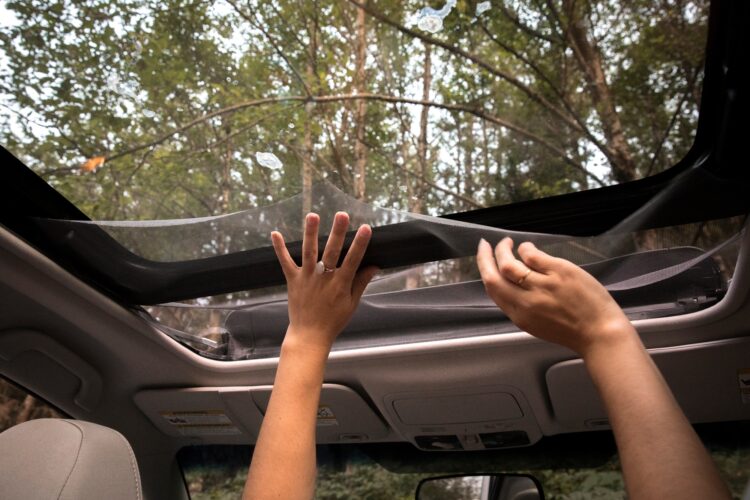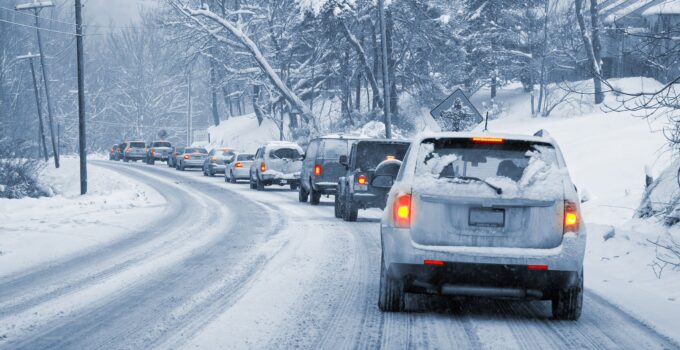Winter seems to come around more quickly every year and that means dark nights, icy roads, cool winds. Depending on where you live in the world, the winter months might greet you with frequent rainfall or even snowfall too.
In the harsh winter weather conditions, driving can become more difficult, and we all need to take extra caution to stay safe on the roads. That includes making sure you are appropriately covered (click here to check out competitive rates) in case of an accident on the road.
Taking extra preparation before you turn the engine on and staying hypervigilant when you’re behind the wheel are both vital to your road safety. You should also keep all of the car safety essentials in your vehicle, like a first aid kit, jump leads, and thermal clothing, so you’re prepared in the event of an emergency.
Page Contents
Here’s How to Stay Safe On the Roads During Winter

Source: familyfuncanada.com
Below, we’ve got some top tips for driving safely as the winter months roll around each year. These tips will apply whether you drive a fuel vehicle or an electric vehicle.
Check over your vehicle before you set off
It’s good practice to check over your vehicle before you set off driving at any time of the year. However, this becomes more important during winter because the cold weather can negatively affect your car.
Make sure all of the lights on your vehicle are working properly and double-check that you have everything you need in case of an emergency, such as a fully-stocked first aid kit, a set of jump leads, and some spare clothing.
Remember that it takes longer to stop on icy roads
Always drive with extra caution and drive more slowly when you’re on icy roads to minimize the risk of road traffic collisions. It may take you longer to react to hazards and your vehicle longer to slow down once you’ve applied the brakes on wet or icy roads.
Leave a wider gap between your car and the vehicle in front to allow for the longer stopping distance. The same applies when you’re coming to a stop to park or pull up on the side of the road.
Drive with extra vigilance

Source: ctvnews.ca
Driving in torrential rainfall, snowfall, or darkness makes it harder for you to notice road hazards. This is why there is a higher number of road traffic accidents during the winter months.
You should always drive with extra vigilance in winter. This means keeping your eyes on the roads and removing as many distractions as possible.
Keep your mobile phone out of the way and use hands-free devices moderately. Always wear your gloves for driving so that you can keep a good grip on the steering wheel and respond to hazards as quickly as possible.
Maintain the legal tire tread and inflation
Winter carries an increased risk of road traffic incidents thanks to the icy roads and frosty conditions. Maintaining the correct tire pressure and thread can reduce the risks of your car skidding on the roads and potentially colliding with another car or a pedestrian.
You’ll need to take a look in your driver’s manual to identify the ideal tire pressure. In most places, the legal tire tread during winter is 2/32 – 4/32 of an inch. The extra tread provides maximum grip on the roads, so you’re able to stay on course, even on icy roads.
Keep your vehicle well ventilated

Source: rei.com
Cold weather causes condensation on your windows, which can significantly decrease your visibility of the road ahead. While you can blast the heating inside your vehicle to clear the front screen, extreme heat can cause you to feel drowsy and fatigued when driving.
Try to avoid using your heater in the middle of winter to keep your windows condensation-free. Instead, open the windows slightly to allow fresh air to circulate through the inside of the vehicle.
Although opening your car windows might not sound favourable on a freezing cold winter morning, it’s better to be safe than sorry! Wrap up warm for your journeys so you don’t get too cold.
Switch to a higher gear when driving on ice or snow
When you’re driving your car on ice or snow, it’s best to use a higher gear than usual (this will only apply if you’re driving a manual car). Pulling away in second gear makes it easier for your vehicle to grip the road’s surface and reduces the risk of skidding.
Staying calm when your vehicle skids

Source: lloydandlloydlaw.com
It’s much harder for your car’s tires to grip the road properly when it’s icy because there is less friction between the two surfaces. This is why driving a car on black ice carries an increased risk of skidding and losing control of your vehicle.
While driving with extra caution will reduce the risk of skidding, it’s not always preventable. If you find that your car starts to slide out of your control, avoid slamming your brakes on, as this could make the issue worse.
Instead, keep a firm grip on the wheel, be aware of your surroundings, and drive gently. It can be difficult not to panic when your car is skidding but staying calm is the best thing to do in this situation.
Make sure you’ve got enough fuel in your vehicle
It goes without saying but make sure your fuel is adequately topped up before you set off on a long road journey (or even a short journey, for that matter). The last thing you’ll want on a freezing cold winter day is for your vehicle to break down in the middle of a busy road.
Running out of fuel is more dangerous than it is in summer, not to mention how much more uncomfortable it is to wait outside for help in winter than in summer. To avoid any disasters on the roads, make sure your tank is at least halfway full at all times.




